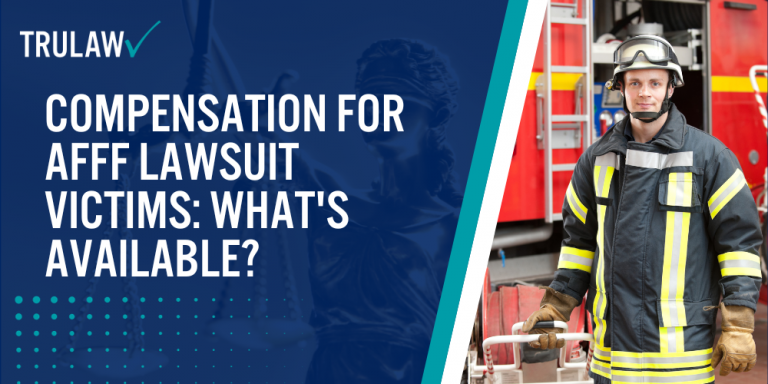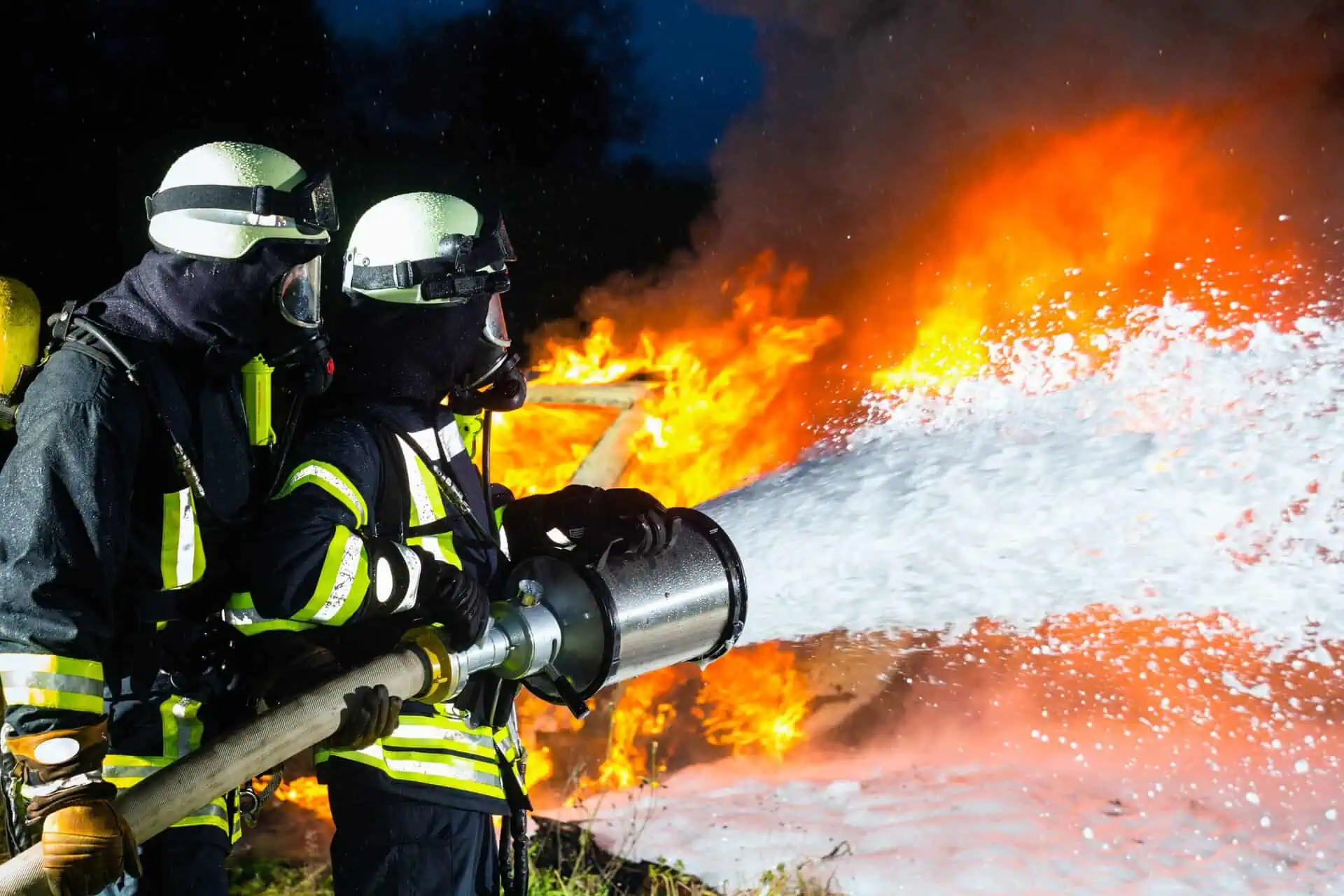Certain professions face a heightened risk of exposure to Aqueous Film Forming Foam (AFFF) due to their regular use of firefighting foam or their involvement with materials containing PFAS chemicals.
Individuals who may be at a higher risk of occupational exposure to AFFF include:
- Military personnel
- Flight deck workers
- Emergency responders in non-firefighting professions
- Workers involved in the transportation or disposal of AFFF
- Airport workers
- Municipal firefighters
- Military firefighters
- Chemical plant workers
Municipal Firefighters
Municipal firefighters are tasked with responding to fires and emergencies in urban areas and communities.
These individuals often encounter fires involving flammable liquids, such as gasoline and oil, where AFFF has traditionally been used to extinguish and control such blazes.
As a result, municipal firefighters face a much greater risk of exposure to AFFF and the associated PFAS chemicals.
Military Firefighters
On military bases and installations, military firefighters are responsible for safeguarding personnel and equipment from fire hazards.
Their exposure risk mirrors that of municipal firefighters, but they may face even greater exposure due to the extensive use of flammable fuels and chemicals on military installations.
Historically, the U.S. Military has been one of the largest users of AFFF firefighting foam, leading to increased exposure risks among military personnel.
Even now, the U.S. military makes up roughly 75% of the firefighting foam market, with the remaining market being comprised of petroleum-processing plants, municipal fire departments, and oil refineries.
Military Personnel
Beyond the firefighters themselves, other military personnel stationed on bases may also be at risk of AFFF exposure.
This can occur during training exercises, emergency responses, or through routine contact with areas where AFFF is stored and used.
The presence of AFFF on military bases makes exposure more widespread across various personnel.
Airport Workers
Airports rely on AFFF to combat potential aircraft fires, particularly those involving fuel.
Airport firefighters are specially trained to respond to aviation-related emergencies, but other airport workers, including those in emergency response roles or aircraft maintenance, may also be exposed to firefighting foam during incidents or routine operations on the airfield.
Flight Deck Crews
Flight deck crews, whether on aircraft carriers or at airports, manage aircraft operations during takeoff, landing, and maintenance.
Given the proximity to aircraft and fuel-based firefighting efforts, these workers are at risk of AFFF exposure, especially in the event of a fire or emergency on the flight deck.
Chemical Plant Employees
Certain industrial facilities, such as chemical plants, may use AFFF for fire suppression in areas where flammable liquid fires are a concern.
Workers involved in the production, storage, or handling of chemicals in these plants may come into contact with AFFF and its PFAS components, increasing their risk of exposure.
Workers Involved in the Transportation or Disposal of AFFF
The transportation and disposal of AFFF can also lead to exposure.
Individuals responsible for moving or disposing of firefighting foam materials, including truck drivers, clean-up crews, and disposal teams, must take precautions to avoid direct contact with AFFF and prevent potential environmental contamination.
Emergency Responders Outside of Firefighting Professions
In certain emergency situations, professionals from non-firefighting backgrounds, such as law enforcement, emergency medical teams, or hazardous materials units, may encounter firefighting foam during chemical spills or accidents involving flammable liquids.
If these individuals have been exposed to AFFF and experience related health issues, they may be eligible to explore legal options related to their exposure.


